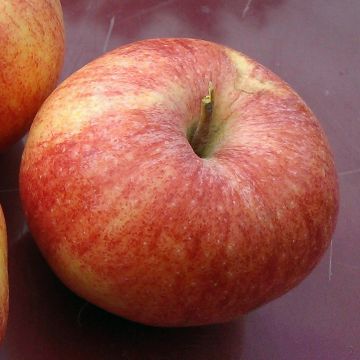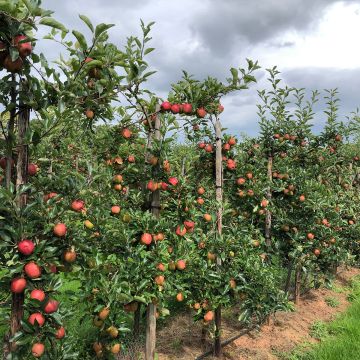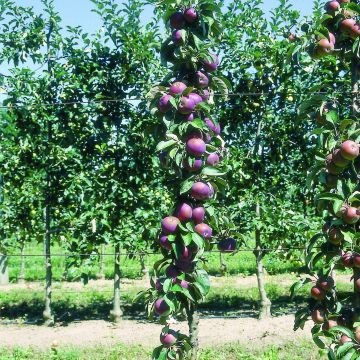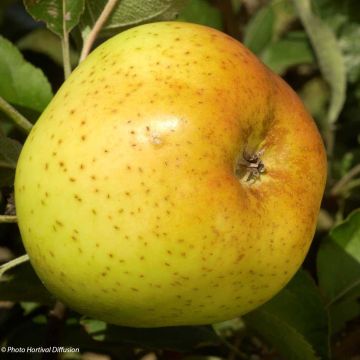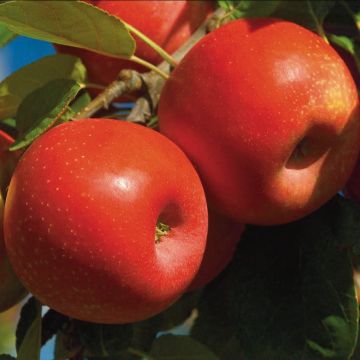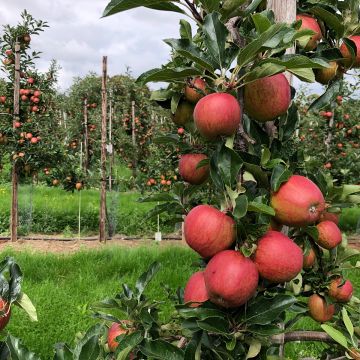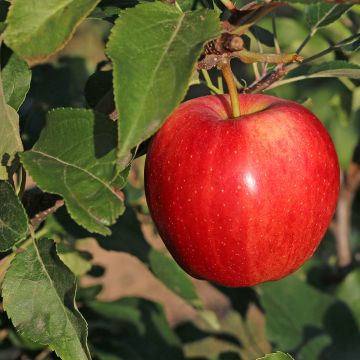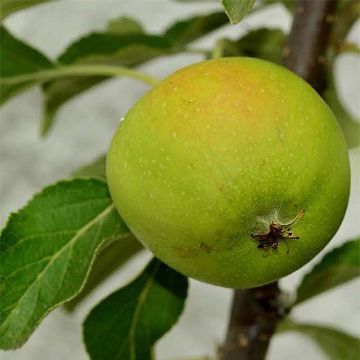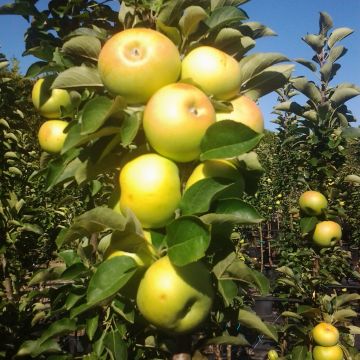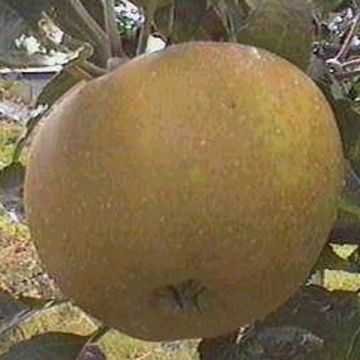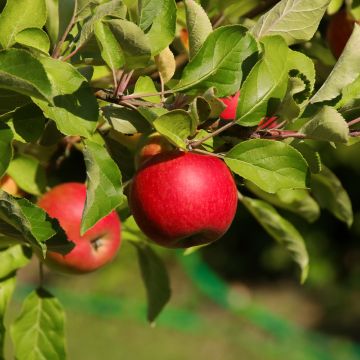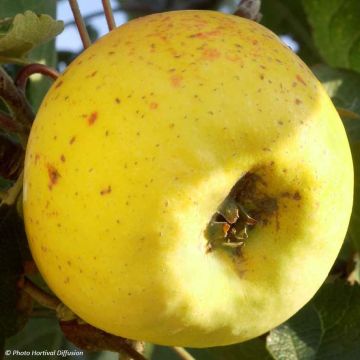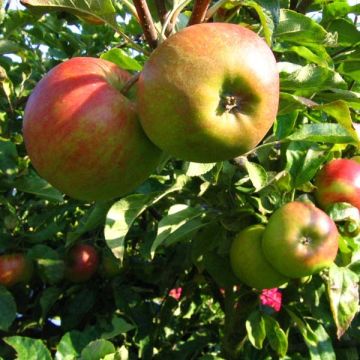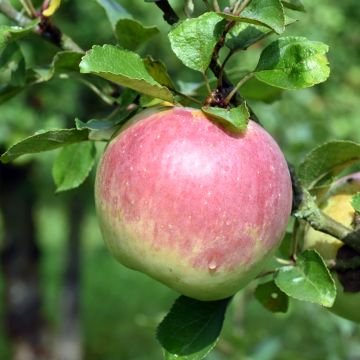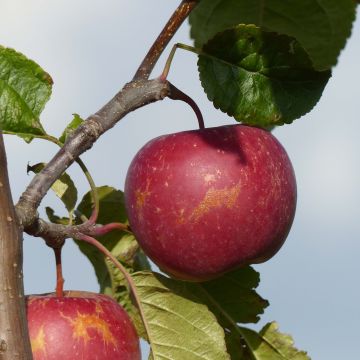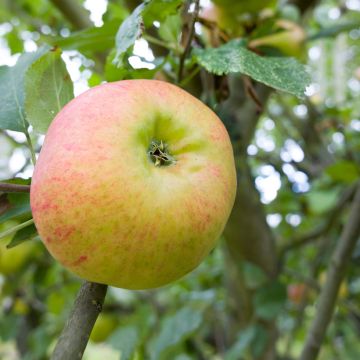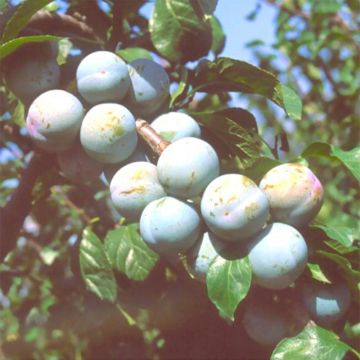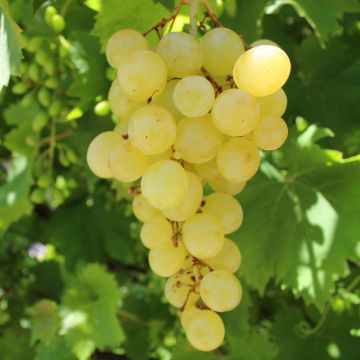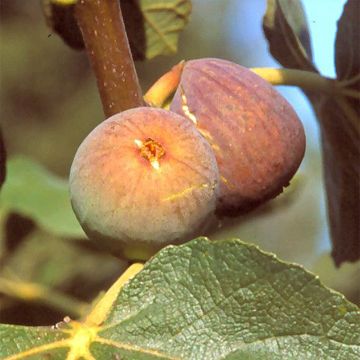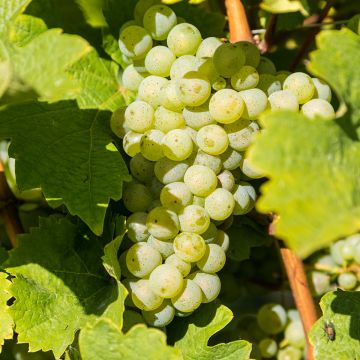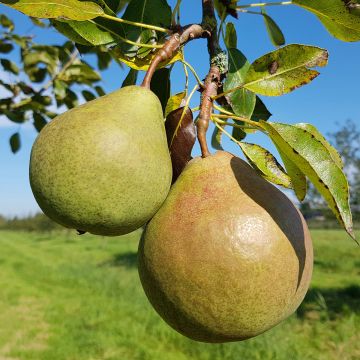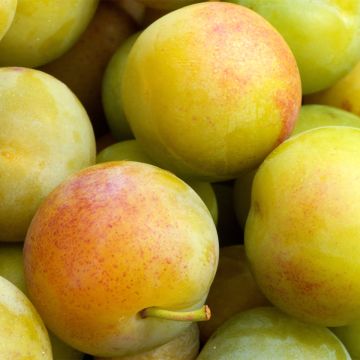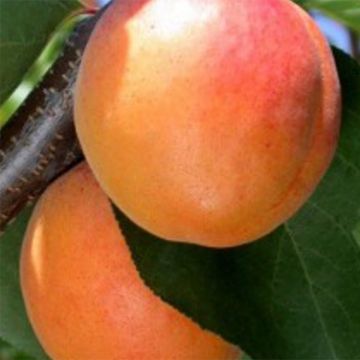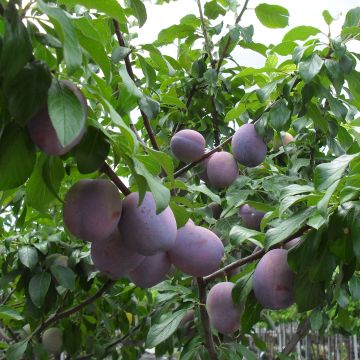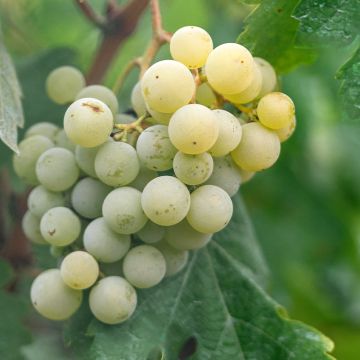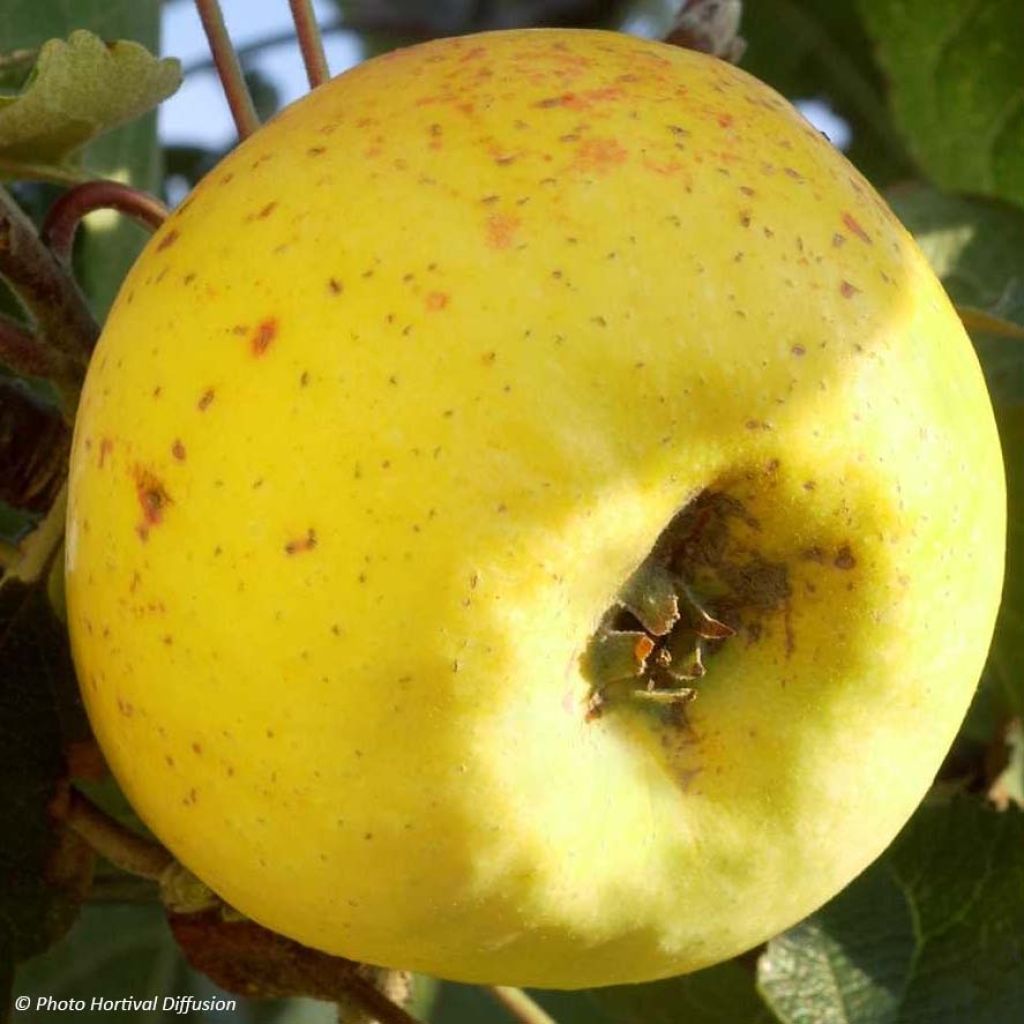

Pommier Transparente de Croncels Bio en racines nues, forme scion
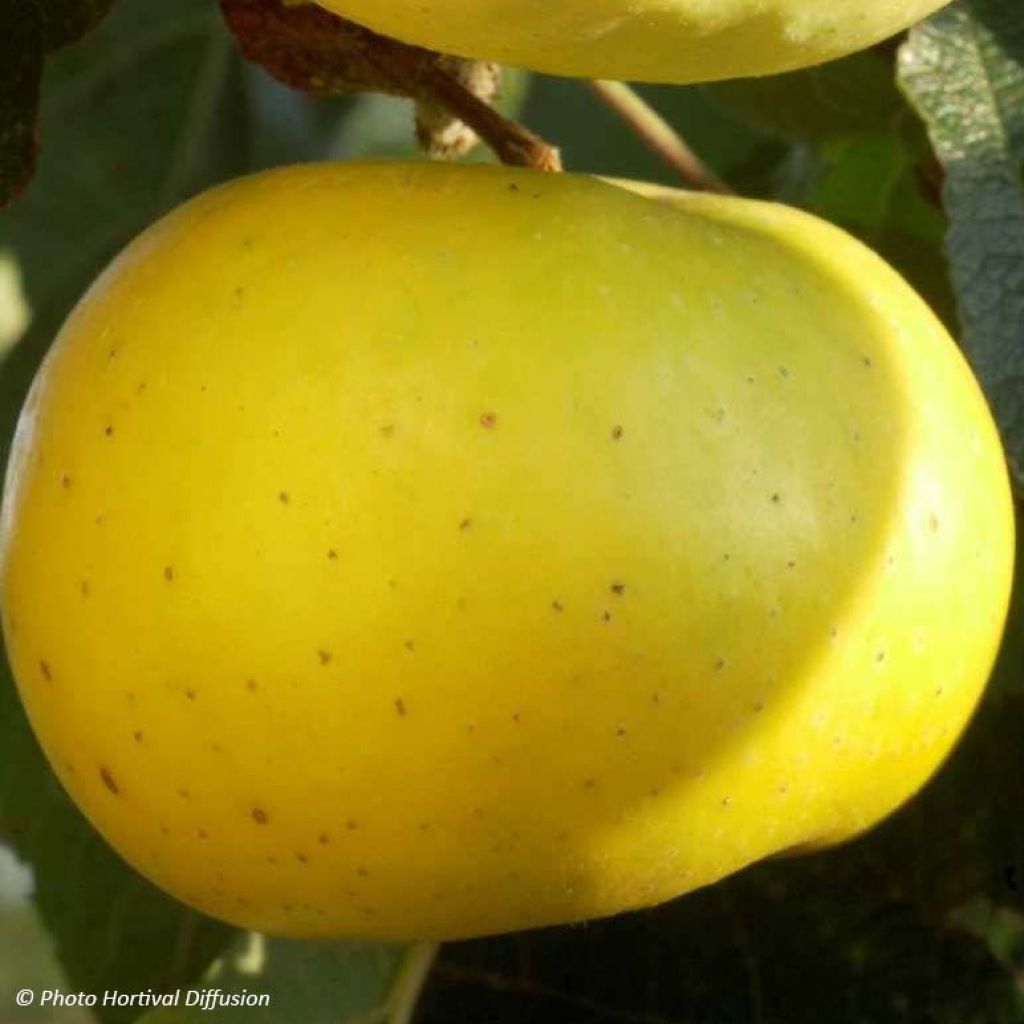

Pommier Transparente de Croncels Bio en racines nues, forme scion
Organic Apple Tree Transparente de Croncels - Malus domestica
Malus domestica Transparente de Croncels
Apple, Orchard apple, Table apple, Cultivated apple
Why not try an alternative variety in stock?
View all →This plant carries a 6 months recovery warranty
More information
We guarantee the quality of our plants for a full growing cycle, and will replace at our expense any plant that fails to recover under normal climatic and planting conditions.
Oversize package: home delivery by special carrier from €6.90 per order..
Express home delivery from €8.90.
Delivery to Corse prohibited: UE law prohibits the import of this plant from mainland France to Corse as part of the fight against Xylella fastidiosa. Please accept our sincere apologies.
More information
Description
The Organic 'Transparente de Croncels' Apple, also known as Croncels Apple or Glasapfel, is an ancient variety obtained in 1869 by Charles and Ernest Baltet in Troyes. The tree is vigorous, resistant to various diseases and pests (except for codling moths), and particularly resistant to woolly aphids. It offers an early, abundant, and regular yield. Its large-sized fruits are harvested from late August to early October. The smooth and thin skin of the apple is light yellow with light gray spots and encloses a yellowish, tender, juicy flesh that has a very fine, sweet, and slightly acidic taste.
Plants from Organic Farming.
Also excellent as a dessert apple as well as a cooking apple, unfortunately it does not store well but compensates for this weakness with excellent taste quality: it makes very good compotes and jellies, and is delicious when baked.
Hardy, the 'Transparente de Croncels' Apple can withstand temperatures as low as -25°C (-13°F) and blooms in April, earlier or later depending on the region. The branches are covered with small decorative white-pink flower clusters. This rather early flowering can be sensitive to spring frosts, which can compromise the harvest. The tree reaches about 4 metres (13 feet) in all directions at maturity. It is an excellent pollinator for apple trees that bloom at the same time, such as 'Cox's Orange Pippin' or 'Reine des Reinettes', which in turn ensure its pollination.
The apple tree, scientifically known as Malus domestica, is a fruit tree that belongs to the Rosaceae family. It is cultivated almost everywhere in the world and includes countless varieties, ancient or modern, that produce apples of varying sizes and flavours.
Apple trees are native to Europe, including France, where their presence has been documented since ancient times. Hardy, sometimes up to -30°C (-22°F) for the most resistant varieties, they can be grown throughout Europe.
The size of the domestic apple tree does not exceed ten metres in height and width. This size can be even smaller depending on the vigour of the rootstock used. This fruit tree generally has a tall trunk that naturally spreads out. It comes in various forms (bush, half-standard, standard...) and can be trained in many ways (column, cordon, espalier...).
The leaves of the apple tree are deciduous and alternate on the branches. Their lamina is oval and toothed. They have a dark green upper surface and a whitish lower surface, slightly downy.
In spring, the apple tree bears white or white-pink flowers grouped in corymbs. The apple flowers are composed of 5 petals, surrounding a core of about 20 stamens. They give rise to fleshy fruits (technically drupes), spherical and containing seeds. Their colour, size, flavour, and shelf life vary depending on the variety.
Rarely self-fertile, the apple tree is a fruit tree that requires the presence of other apple trees, flowering at the same time and nearby, to bear fruit.
The apple tree can be grown in all climates, but particularly appreciates temperate and rather humid regions, such as Normandy. It thrives in full sun and reasonably moist and fertile soil. It is traditionally planted in the heart of an orchard, but can also be grown as a standalone tree or even in a hedge.
It is an easy fruit tree that requires at least some thinning pruning. Proper fruiting pruning will prevent the phenomenon of alternate bearing (fruiting every other year). An annual or biennial application of well-decomposed compost also enhances the productivity of apple trees.
Apples are harvested in late summer and autumn and can sometimes be stored for a long period in a cellar and consumed until early spring. Apples lend themselves to numerous culinary preparations (compotes, pies, jellies) but can also be used to make apple juice or cider.
For transportation reasons, our tallest scions may be pruned before shipping. They are suitable for all common forms: cordons, espaliers, bush, half-standard, and low standard, except for high standards. If you would like more information or advice on training your fruit trees, please do not hesitate to contact us.
Report an error about the product description
Organic Apple Tree Transparente de Croncels - Malus domestica in pictures
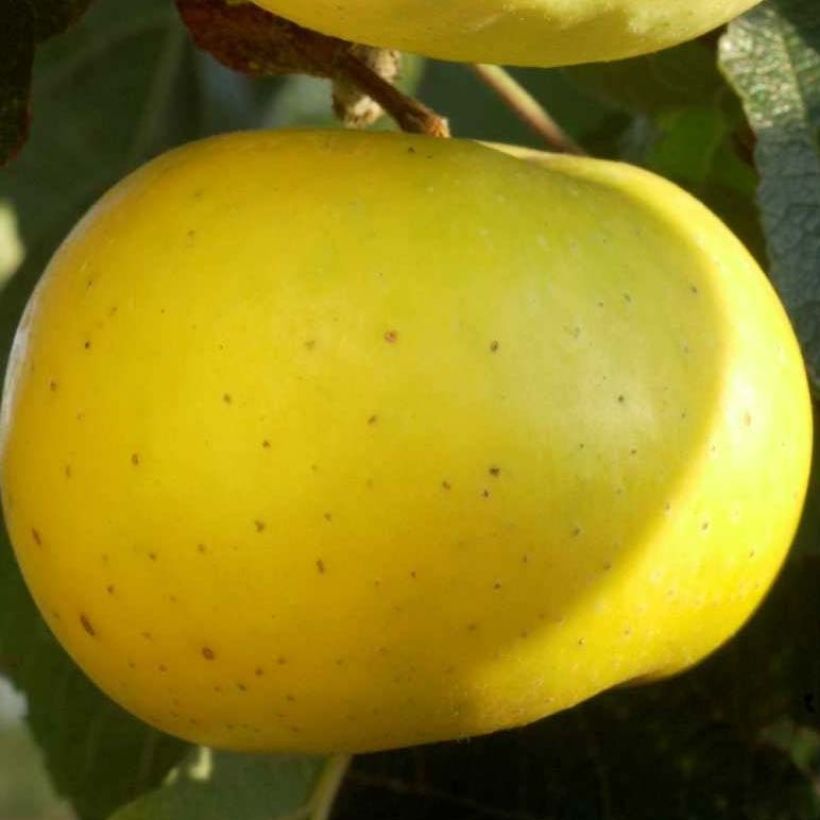

Plant habit
Fruit
Flowering
Foliage
Botanical data
Malus
domestica
Transparente de Croncels
Rosaceae
Apple, Orchard apple, Table apple, Cultivated apple
Cultivar or hybrid
Other Apple trees
Planting and care
Choose, for your 'Transparente de Croncels' Apple Tree, a sunny location, the soil can be slightly chalky or acidic but not excessive. Dig a large planting hole at least 3 times the volume of the root ball. Simultaneously add organic matter (potting soil, compost...) and a base fertilizer such as crushed horn. Do not bury the graft collar. Stake if necessary. Water abundantly, even in winter, even if it rains. Fruit trees are ideally planted between October and March, outside of the freezing period. Container-grown plants can be planted all year round, except during periods of extreme heat or frost.
You can add a small handful of wood ash, rich in potash, during the winter, this will improve fruiting. Watch out for possible aphid attacks during the season. A white powdery fungus, powdery mildew, can appear on the leaves in summer, but it does not harm fruit development in gardens. Harvest takes place in September. Only store picked fruits. Apples are best stored with the stem downwards, on shelves or in crates. Choose a preferably completely dark, dry and cool place, but frost-free.
Planting period
Intended location
Care
-
, onOrder confirmed
Reply from on Promesse de fleurs
Ancient and local varieties
Haven't found what you were looking for?
Hardiness is the lowest winter temperature a plant can endure without suffering serious damage or even dying. However, hardiness is affected by location (a sheltered area, such as a patio), protection (winter cover) and soil type (hardiness is improved by well-drained soil).

Photo Sharing Terms & Conditions
In order to encourage gardeners to interact and share their experiences, Promesse de fleurs offers various media enabling content to be uploaded onto its Site - in particular via the ‘Photo sharing’ module.
The User agrees to refrain from:
- Posting any content that is illegal, prejudicial, insulting, racist, inciteful to hatred, revisionist, contrary to public decency, that infringes on privacy or on the privacy rights of third parties, in particular the publicity rights of persons and goods, intellectual property rights, or the right to privacy.
- Submitting content on behalf of a third party;
- Impersonate the identity of a third party and/or publish any personal information about a third party;
In general, the User undertakes to refrain from any unethical behaviour.
All Content (in particular text, comments, files, images, photos, videos, creative works, etc.), which may be subject to property or intellectual property rights, image or other private rights, shall remain the property of the User, subject to the limited rights granted by the terms of the licence granted by Promesse de fleurs as stated below. Users are at liberty to publish or not to publish such Content on the Site, notably via the ‘Photo Sharing’ facility, and accept that this Content shall be made public and freely accessible, notably on the Internet.
Users further acknowledge, undertake to have ,and guarantee that they hold all necessary rights and permissions to publish such material on the Site, in particular with regard to the legislation in force pertaining to any privacy, property, intellectual property, image, or contractual rights, or rights of any other nature. By publishing such Content on the Site, Users acknowledge accepting full liability as publishers of the Content within the meaning of the law, and grant Promesse de fleurs, free of charge, an inclusive, worldwide licence for the said Content for the entire duration of its publication, including all reproduction, representation, up/downloading, displaying, performing, transmission, and storage rights.
Users also grant permission for their name to be linked to the Content and accept that this link may not always be made available.
By engaging in posting material, Users consent to their Content becoming automatically accessible on the Internet, in particular on other sites and/or blogs and/or web pages of the Promesse de fleurs site, including in particular social pages and the Promesse de fleurs catalogue.
Users may secure the removal of entrusted content free of charge by issuing a simple request via our contact form.
The flowering period indicated on our website applies to countries and regions located in USDA zone 8 (France, the United Kingdom, Ireland, the Netherlands, etc.)
It will vary according to where you live:
- In zones 9 to 10 (Italy, Spain, Greece, etc.), flowering will occur about 2 to 4 weeks earlier.
- In zones 6 to 7 (Germany, Poland, Slovenia, and lower mountainous regions), flowering will be delayed by 2 to 3 weeks.
- In zone 5 (Central Europe, Scandinavia), blooming will be delayed by 3 to 5 weeks.
In temperate climates, pruning of spring-flowering shrubs (forsythia, spireas, etc.) should be done just after flowering.
Pruning of summer-flowering shrubs (Indian Lilac, Perovskia, etc.) can be done in winter or spring.
In cold regions as well as with frost-sensitive plants, avoid pruning too early when severe frosts may still occur.
The planting period indicated on our website applies to countries and regions located in USDA zone 8 (France, United Kingdom, Ireland, Netherlands).
It will vary according to where you live:
- In Mediterranean zones (Marseille, Madrid, Milan, etc.), autumn and winter are the best planting periods.
- In continental zones (Strasbourg, Munich, Vienna, etc.), delay planting by 2 to 3 weeks in spring and bring it forward by 2 to 4 weeks in autumn.
- In mountainous regions (the Alps, Pyrenees, Carpathians, etc.), it is best to plant in late spring (May-June) or late summer (August-September).
The harvesting period indicated on our website applies to countries and regions in USDA zone 8 (France, England, Ireland, the Netherlands).
In colder areas (Scandinavia, Poland, Austria...) fruit and vegetable harvests are likely to be delayed by 3-4 weeks.
In warmer areas (Italy, Spain, Greece, etc.), harvesting will probably take place earlier, depending on weather conditions.
The sowing periods indicated on our website apply to countries and regions within USDA Zone 8 (France, UK, Ireland, Netherlands).
In colder areas (Scandinavia, Poland, Austria...), delay any outdoor sowing by 3-4 weeks, or sow under glass.
In warmer climes (Italy, Spain, Greece, etc.), bring outdoor sowing forward by a few weeks.

































